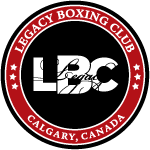
Speed...
Is important when you think about your dryland training for hockey. Many hockey players begin to get in shape, or try to stay in shape, on a treadmill or by heading out the door and going for a run. But you don’t need to run distances for hockey—you need to go 100 percent for a few minutes
Strength...
Also plays into speed. Interval training will help you build strength for that third-period game-winner. While pounding heavy weights may help you bulk up and look good in a T-shirt, it won’t help you skate faster. Bonus points: stability is a byproduct of improved strength.
Stamina...
In hockey is the ability to go hard in the third period. Jogging for an hour builds one type of stamina, but the kind you need in hockey is the ability to play full-tilt for a minute or two at a time throughout a game—you won’t achieve that by going for a long jog. Again, interval training is your best bet to develop the right kind of stamina for hockey.
Stability and Flexibility...
Are important so your body can carry and use the strength you build and transfer it to the ice. You need stability in your joints from your ankles to your shoulders, and flexibility to allow it to flow through you.



